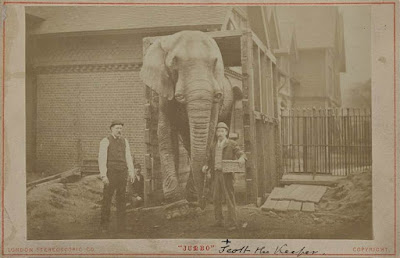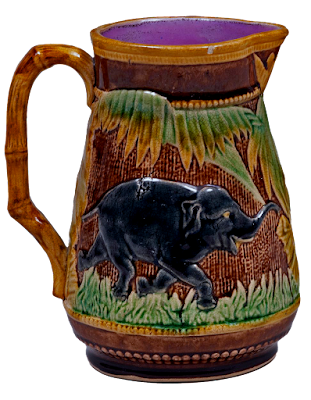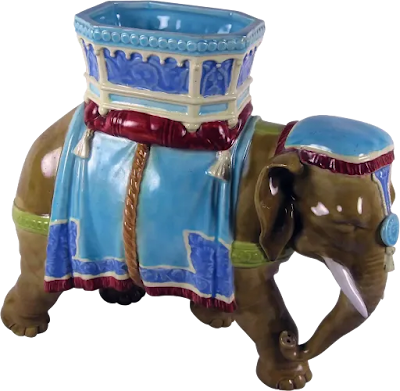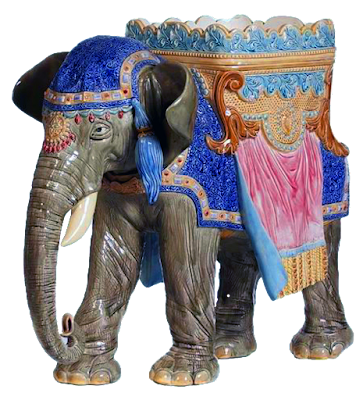Of course Santa had been around for centuries in the guise of St. Nick and the Democratic donkey had been around since Andrew Jackson's time, but it wasn't until Nast seized on them in the 1870's that they developed the modern conception we have of them today.
With the political season upon us, I thought it may be a good time to take a look at how majolica manufacturers have represented Nast's symbols of the two main American political parties, the elephant and the donkey.
First we'll take a look at the symbol of the grand old party, the Republican elephant.
There are no lack of representations of the elephant in majolica.
The most spectacular would have to be the two Minton gold covered majolica elephants with howdahs in the window of Thomas Goode & Sons store in the Mayfair section of London. Created and displayed at the Paris 1889 International Exhibition, the elephants are the largest existing pieces of majolica in the world, standing at over seven feet tall! After the Exhibition, Goode purchased the elephants and placed them in the shop's window where they have remained for 123 years. Of course, that's not to say that the elephants aren't for sale because they are. The price tag: a cool €6 million. (That's about $9 million.)
The most famous elephant of the 19th Century was, of course, Jumbo, that wild African elephant that started its life in the Sudan and traveled extensively through Paris, London and finally the home of P.T. Barnum, New York City.
Jumbo
It was no doubt that while in London between 1861 and 1881, he caught the eye of majolica makers, a prodigious period of majolica manufacture.
A mania for elephants erupted and soon pachyderms were appearing everywhere in majolica, from teapots to garden seats; wall pockets to bottles; and jardinieres to humidors. One even came with a clock!
Julius Dresser majolica match striker
Gerbing & Stephan majolica elephant with howdah
Wedgwood majolica Palm cheese bell
Royal Worcester majolica elephant with howdah modeled by James Hadley
Onnaing majolica elephant with howdah
Choisy-le-Roi majolica elephant with howdah
Gilded variation of the RW Hadley elephant.
Brown-Westhead Moore garden seat
Forester & sons majolica elephant teapot
Majolica elephant bottle
Thomas Forester majolica elephant, a copy of Royal Worcester
Forester majolica elephant with howdah
Julius Dressler majolica clock in howdah
Sarreguemines majolica elephant jug
Bavent French majolica elephant with howdah
Sarreguemines majolica elephant fountain
Onnaing majolica humidor
Wardle bamboo and fern jardiniere
Austrian majolica elephant humidor
Schiller & Sons majolica humidor
Actually, I have an amusing story to tell about this last little fellow if you'll pardon the aside.
Years ago I purchased this humidor for $200 from a dealer in the South. I took it to an antique show in Pennsylvania where I sold it before the show opened for $250. The dealer who purchased it then sold it to another dealer who then sold it again, each time escalating the price. By the time the show opened it had changed hands four times and was selling for $850!
If that little story proves anything it's that the elephant's popularity has endured all these years later and has proven an admired symbol of the Republican party.
Next time, we'll take a look at the Democratic donkey.

























































No comments:
Post a Comment